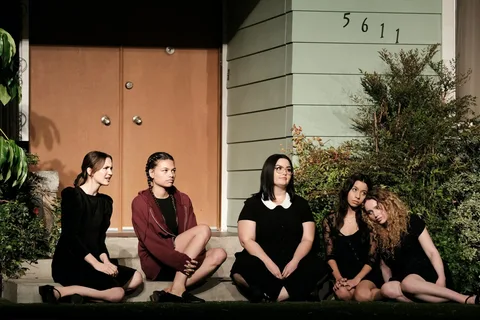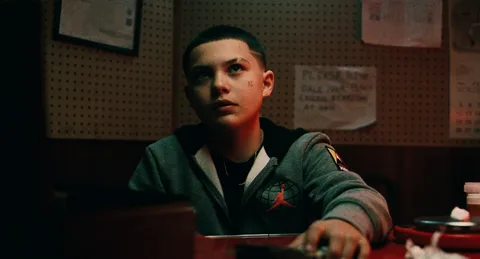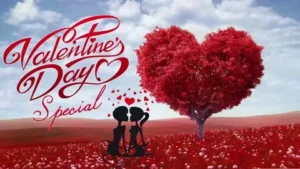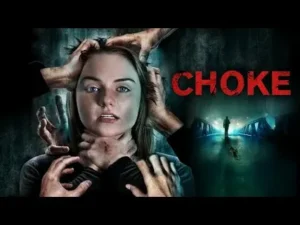Understanding “Euphoria or Glee NYT”: What It Really Means
Table of Contents
Introduction
Euphoria or glee NYT is a phrase that often appears in news articles and discussions about happiness. These two words describe different types of joyful feelings, but many people wonder what makes them special. Both euphoria and glee are positive emotions that make us feel good, but they differ in strength and intensity.
When we experience euphoria or glee NYT, we are feeling happy, but the way we express that happiness can vary. Euphoria is usually a stronger, more intense feeling of excitement and joy, while glee is a lighter, playful kind of happiness. Understanding these differences can help us recognize these emotions in our own lives and appreciate the moments that bring us joy.
The term euphoria or glee NYT is often used in stories, news, and entertainment to describe events that make people happy. Whether it’s a big win, a fun experience, or a simple moment of joy, both euphoria and glee are emotions that play a big part in making life enjoyable.

What is Euphoria or Glee NYT?
Euphoria or glee NYT refers to feelings of happiness, joy, and excitement that we often see described in the news or entertainment. Euphoria is a very strong emotion, one that makes a person feel as if they are on top of the world. It’s often linked to big events or achievements, where people feel a burst of excitement that is hard to control. Glee, on the other hand, is a lighter and more playful feeling of happiness. It’s the kind of joy that brings a smile to your face or makes you laugh with friends.
The term euphoria or glee NYT is commonly used in articles or reports to describe these emotions during happy or successful moments. When a person wins a big competition, gets a promotion, or reaches a major goal, they may feel euphoria. This feeling is strong and overwhelming, giving them energy and a sense of accomplishment. Glee, though less intense, is still important. It’s the joy we feel in everyday moments, like hearing good news or spending time with loved ones.
Euphoria is often compared to a natural high, as it can make people feel as if nothing can bring them down. It’s the kind of happiness that fills a person with energy and excitement, making them feel almost invincible. While glee doesn’t have the same power, it is still a valuable emotion because it brings joy in the little things. Whether it’s laughing at a joke, enjoying a favorite activity, or receiving a compliment, glee is what makes ordinary moments special.
Euphoria or glee NYT reminds us that happiness comes in different forms. Some moments bring us great joy and excitement, while others bring us lighthearted happiness. Both euphoria and glee are important because they help balance the ups and downs of life. While euphoria may not happen every day, glee can be felt more often, making our daily lives more enjoyable.
Understanding euphoria or glee NYT helps us appreciate the moments of joy that come our way. Whether it’s a big achievement or a simple happy moment, these emotions help make life better. Recognizing when we feel euphoria or glee can help us enjoy those moments even more, adding more happiness to our lives.
Understanding the Meaning of Euphoria or Glee NYT
The phrase euphoria or glee NYT helps us understand two different types of happiness. Euphoria is an intense feeling of excitement and joy that can make us feel as if we’re soaring. It’s the kind of emotion that usually comes from big events or accomplishments, like winning an award, achieving a major goal, or experiencing something life-changing. Euphoria is powerful, making a person feel like they are filled with energy and happiness all at once.
On the other hand, glee is a more playful, lighthearted emotion. While it is still a form of happiness, glee doesn’t have the same intense rush that euphoria brings. Glee is often felt during fun and enjoyable moments, like sharing a laugh with friends, playing a game, or hearing good news. It’s a more everyday kind of joy, something we can experience more often than euphoria.
When we talk about euphoria or glee NYT, we are discussing the range of happiness that people feel in their lives. Euphoria is rare and special, while glee is more common and easier to experience. Both emotions play a key role in how we experience joy, but they do so in different ways. Euphoria can be overwhelming and energizing, while glee is gentle and uplifting, adding a bit of fun and warmth to our day.
The New York Times often uses euphoria or glee NYT in articles to describe moments of success or happiness in news stories. For example, when a team wins a championship, reporters may describe the players as feeling euphoric. Meanwhile, moments of glee might be mentioned when people celebrate smaller, everyday joys, like a community event or a fun gathering. These emotions help connect readers to the happy moments being described, making the stories more relatable.
By understanding the difference between euphoria or glee NYT, we can better recognize these feelings in our own lives. Whether it’s the thrill of an exciting achievement or the simple joy of a fun moment, both euphoria and glee bring happiness that makes life richer. Appreciating both emotions helps us see that happiness can come in many forms, from the big to the small.

How Euphoria or Glee NYT Is Used in Daily Life
Euphoria or glee NYT can be seen in many parts of our daily life, as people experience these emotions in different ways. Euphoria is often linked to big, life-changing moments. For instance, when someone graduates from school, wins a major competition, or achieves a big goal, they might feel euphoric. These moments of great joy fill them with energy and excitement, making them feel unstoppable. Euphoria is rare but unforgettable, giving people a sense of accomplishment and pride.
On the other hand, glee is a much lighter and more common emotion that we experience in small, joyful moments. Glee can come from simple things like hearing a funny joke, spending time with friends, or doing something you love. For example, a child might feel glee when they get a surprise treat, or an adult might feel glee when they receive good news about something they care about. Glee is the kind of happiness that makes us smile and feel good inside, even if it’s just for a short time.
In everyday conversations and stories, euphoria or glee NYT are used to describe the highs of life. News articles might talk about people feeling euphoria after a major success or feeling glee during a joyful celebration. When people share their experiences with others, they often use these words to describe how happy they felt in those moments. For instance, someone might say they felt euphoria after getting their dream job, while another person might say they felt glee while enjoying a fun day with family.
These emotions also appear in media, like movies, TV shows, and books, where characters experience euphoria or glee NYT during happy scenes. In movies, we might see characters feeling euphoria after a big win, like in a sports competition, or glee when they reunite with loved ones. These emotions help make stories more exciting and relatable, showing us the different ways people experience joy.
In our daily lives, recognizing euphoria or glee NYT helps us appreciate the range of happiness we feel. Whether it’s a big moment of euphoria or a small burst of glee, both emotions remind us that joy can come from many places. By understanding how these emotions show up in daily life, we can enjoy our happy moments even more.
Euphoria or Glee NYT: The Difference Between Euphoria and Glee
When discussing euphoria or glee NYT, it’s important to understand the key differences between these two emotions. Euphoria is a powerful and overwhelming feeling of intense joy. It’s the kind of happiness that can make a person feel as if they are on top of the world. Euphoria often comes from life-changing moments, like winning a major award, achieving a personal goal, or experiencing something truly extraordinary. The intensity of euphoria can leave a lasting impression, making it a rare but memorable emotion.
On the other hand, glee is a lighter, more everyday kind of happiness. It is still a joyful feeling, but not as intense as euphoria. Glee is more playful and can be experienced through small, simple moments. For example, you might feel glee when you hear a funny joke, spend time with friends, or receive a pleasant surprise. Glee brings a smile to your face and fills your heart with warmth, but it doesn’t have the same overwhelming power that euphoria does.
While both euphoria or glee NYT bring happiness, they differ in how they are felt and expressed. Euphoria often comes with physical reactions, such as a rush of energy, increased heart rate, and even feelings of exhilaration. People who experience euphoria may feel like they can conquer anything. Glee, on the other hand, is more subtle and doesn’t usually come with such intense physical reactions. It’s the joy of enjoying the moment, making us feel light and cheerful.
The situations that lead to euphoria and glee are also different. Euphoria is usually tied to big events, like winning a competition, reaching a milestone, or hearing life-changing news. Glee, however, can be felt in everyday moments, like laughing with a friend or enjoying a fun activity. Both emotions are important, but they come from different types of experiences.
Understanding the difference between euphoria or glee NYT helps us appreciate the variety of happiness we can feel. Euphoria is rare and powerful, while glee is more common and accessible. Both emotions add joy to our lives, making us feel grateful for both big achievements and small moments of happiness.

Can We Always Feel Euphoria or Glee NYT?
While euphoria or glee NYT are both wonderful emotions, they are not feelings we can experience all the time. Euphoria, in particular, is a rare and intense emotion that usually comes during special, life-changing moments. For example, you might feel euphoric when achieving a long-time dream, winning an important competition, or experiencing something that completely surprises you. However, these moments don’t happen every day, so it’s not possible to feel euphoria all the time. It’s an emotion that comes and goes, often triggered by big events or successes.
On the other hand, glee is a more common emotion that can be felt more often. Glee is a lighter and more playful kind of happiness that comes from enjoying small moments, like hearing a funny joke, spending time with friends, or getting a surprise treat. Unlike euphoria, glee doesn’t require huge events to be triggered. Because of this, we can feel glee more regularly in our daily lives. Whether it’s a fun day with family or a moment of laughter, glee can be experienced frequently.
However, even though we can feel glee more often, we can’t expect to feel it all the time. Life has ups and downs, and there are moments when we might feel sad, frustrated, or tired. It’s completely normal to go through periods when we don’t experience much joy. Feeling glee requires being in a good mood or having something pleasant happen, so there will be times when it’s harder to find reasons to feel cheerful.
For euphoria or glee NYT to be part of our daily life, we need to recognize that emotions like these are natural but not constant. Sometimes, we have to create opportunities for joy by spending time with people we care about, engaging in activities that make us happy, or simply appreciating the small moments that come our way. While euphoria might be rare, glee is always available if we open ourselves up to the happiness that can be found in everyday things.
Ultimately, we can’t always feel euphoria or glee, but we can strive to appreciate and enjoy them when they do appear. Understanding that both emotions are important in different ways helps us embrace the moments when we feel them, whether they come from big events or simple joys.
Euphoria or Glee NYT in News and Entertainment
Euphoria or glee NYT often make their way into news articles and entertainment stories, where they help to highlight moments of joy and excitement. In news, euphoria is commonly used to describe the overwhelming happiness people feel after achieving something extraordinary. For example, a sports team winning a championship or a musician winning a major award might be described as feeling euphoric. These moments capture the attention of readers and viewers because they are full of intense emotions and life-changing experiences. Euphoria is a powerful feeling, making it an effective way for journalists to emphasize the significance of an event.
In entertainment, euphoria or glee NYT are used to describe the moods of characters in films, TV shows, or music. Characters in movies or shows might feel euphoric after a big win or during a moment of personal triumph. In contrast, glee is often used to show the lighter, more playful side of happiness, especially in family-friendly entertainment. For example, in musical shows like Glee, characters frequently express glee through songs and joyful moments. These emotions resonate with audiences because they reflect real-life feelings that many people experience during happy, lighthearted moments.
The media uses euphoria or glee NYT to create connection and engagement with the audience. When people read about someone feeling euphoric after a major success or gleeful in a fun, everyday situation, they can relate to those feelings. News stories and entertainment often focus on these emotions to bring out the human side of big events. Whether it’s a political victory, an athletic achievement, or a personal milestone, these emotions show the highs of life and connect people to those who are experiencing joy.
In entertainment, the use of euphoria or glee NYT also helps to set the tone of a story. A dramatic scene with euphoric emotions can build excitement and anticipation, while moments of glee can add lightness and fun to a show. These feelings create memorable experiences for viewers, helping them feel a sense of connection with the characters. Whether it’s the thrill of a big win or the joy of a fun gathering, these emotions bring entertainment stories to life.
Overall, euphoria or glee NYT in news and entertainment play a key role in connecting audiences with the emotions behind the events or stories. They help people relate to what’s happening, making the highs of life more engaging and enjoyable to follow. Whether it’s through the intensity of euphoria or the playfulness of glee, these emotions help to paint a vivid picture of happiness in the world around us.

How Does Euphoria or Glee NYT Make Us Feel?
Euphoria or glee NYT can have a powerful effect on our emotions, making us feel a range of intense and joyful reactions. Euphoria, for instance, is a strong emotion that can make us feel like we are on top of the world. When we experience euphoria, we feel an overwhelming sense of happiness and excitement that lifts our spirits and gives us a burst of energy. It’s the kind of feeling that can make us feel invincible, as if we can achieve anything. Whether it’s from a big success or a special event, euphoria creates a feeling of pure joy that stays with us for a long time.
On the other hand, glee brings a lighter, more playful feeling of happiness. While not as intense as euphoria, glee still makes us feel good and fills us with warmth. When we feel gleeful, it’s often because of small, fun moments that brighten our day. It might happen when we laugh at a funny joke, spend time with friends, or enjoy a fun activity. Glee is less overwhelming than euphoria, but it still adds joy to our lives, making everyday moments feel more special. It’s a lighthearted feeling that helps us stay positive, even during tough times.
When we read or hear about euphoria or glee NYT in news stories or entertainment, we often feel connected to the people experiencing these emotions. Their joy becomes contagious, making us feel happier ourselves. For example, when a sports team wins a championship and is described as feeling euphoric, we may feel a part of their victory, sharing in their happiness. Similarly, stories of people feeling gleeful during a fun celebration or surprise can make us smile and feel lighter. These emotions can brighten our day, even if we’re not directly involved in the event.
Both euphoria and glee also help us to appreciate the little moments in life. While euphoria might come from rare, life-changing events, glee can be found in simple pleasures like a sunny day or a good conversation. When we understand how these emotions work, we learn to find happiness in both big and small moments. Whether it’s the excitement of an achievement or the joy of laughter, both feelings remind us that happiness can be found all around us.
Ultimately, euphoria or glee NYT help us experience joy on different levels, making our lives richer and more enjoyable. They make us feel alive and connected to the people and moments around us. By understanding how these emotions work, we can open ourselves up to more happiness, finding ways to experience euphoria and glee in our own lives. Whether it’s through big achievements or simple moments of joy, these emotions help make life more beautiful and meaningful.
Why People Search for Euphoria or Glee NYT
People often search for euphoria or glee NYT because they are curious about the feelings of extreme happiness that these emotions represent. Euphoria, with its intense rush of joy, is a feeling many people want to experience or understand better. When people hear about someone feeling euphoric, such as a celebrity winning an award or an athlete achieving a major victory, they may search for more information to understand what that moment felt like. Euphoria is a rare emotion, so it naturally draws people in, as it represents a peak experience of happiness that many aspire to feel themselves.
Similarly, people search for glee because it represents a lighter, more accessible kind of happiness that can be experienced more frequently. Glee is a simple, joyful feeling that comes from fun moments, like laughing with friends or enjoying a good time. When people search for euphoria or glee NYT, they might be looking for stories that capture the joy and excitement of everyday life. Glee reminds us that happiness doesn’t always need to be big or overwhelming—it can be found in small, delightful experiences that are easy to enjoy.
In the world of news and entertainment, people search for euphoria or glee NYT to find inspiration or connection. Reading about others experiencing these emotions helps people connect to the happiness of others, making them feel more hopeful and positive. Whether it’s a success story or a lighthearted moment, these emotions make us feel better by showing that joy exists in many forms. People often look for stories of euphoria or glee to boost their mood and remind themselves that happiness is always within reach.
Another reason people search for euphoria or glee NYT is that these emotions help us make sense of our own feelings. When we see or read about people experiencing euphoria, we understand that it’s okay to feel overjoyed during big moments in life. Likewise, learning about glee can help us appreciate the small, everyday joys we might otherwise overlook. Searching for stories about these emotions encourages us to reflect on our own experiences of happiness, helping us better understand what brings us joy and how to find it in our daily lives.
Ultimately, people search for euphoria or glee NYT because they want to connect with the emotions of joy and happiness, whether it’s through the intense rush of euphoria or the simple delight of glee. These emotions are an important part of life, and exploring them in news and entertainment stories helps us embrace happiness in all its forms. Whether we are seeking inspiration, connection, or simply a reminder to enjoy the good moments in life, these emotions play an essential role in how we experience the world around us.

Euphoria or Glee NYT: Real Life Examples of These Emotions
Euphoria or glee NYT are emotions that can be seen in real-life situations, and they are often featured in news stories that highlight moments of pure joy. One famous example of euphoria is the celebration of athletes after winning major championships. Take, for instance, the feeling of euphoria experienced by soccer players after winning the World Cup. The intense joy and excitement they feel after achieving such a significant victory are often captured in photographs and news reports. Fans, too, experience euphoria as they celebrate with their teams, creating a shared sense of happiness and accomplishment that goes beyond the individual.
In contrast, glee is often seen in lighter, more everyday moments. A good example of glee can be found in the reactions of people at a surprise party. Imagine a group of friends planning a surprise celebration for someone’s birthday. When the person walks into the room and sees the decorations and their loved ones, they are filled with glee. The laughter, smiles, and joyful reactions from everyone involved are expressions of happiness that are simple but deeply meaningful. This kind of joy, driven by the fun of the moment, is a great example of how glee can make everyday life more enjoyable.
Another real-life example of euphoria or glee NYT can be found in the world of entertainment. Celebrities and public figures often experience euphoria when they win awards or achieve a significant career milestone. When a musician wins a Grammy Award or an actor wins an Oscar, the euphoria they feel is often shared with their fans through speeches, interviews, and social media posts. These moments are celebrated not only by the person receiving the award but also by the people who admire them, creating a collective experience of joy and pride.
In the world of family and relationships, glee can be found in the simplest of moments. For example, children often express glee when they receive a new toy or when they experience something exciting like a trip to an amusement park. Their laughter and excitement are contagious, spreading happiness to everyone around them. This example shows how glee is not just for major events but can also be found in the small, delightful moments that make life fun and joyful.
Euphoria or glee NYT are powerful emotions that shape our experiences and connect us to others. Whether it’s the overwhelming happiness of winning something big or the lighthearted joy of a fun moment, both emotions help make life more meaningful. By looking at real-life examples of euphoria and glee, we see how these feelings can turn ordinary moments into extraordinary ones, reminding us to celebrate the happiness in our lives, no matter how big or small.
The Science Behind Euphoria or Glee NYT
The science behind euphoria or glee NYT lies in the way our brain reacts to positive experiences. Euphoria is often triggered by intense moments of happiness or achievement. When we experience something that makes us feel euphoric, such as winning an award or achieving a major goal, our brain releases a surge of feel-good chemicals like dopamine and endorphins. Dopamine is a neurotransmitter that plays a key role in pleasure and reward, while endorphins are natural painkillers that help us feel good. These chemicals create the intense, overwhelming feeling of euphoria, making us feel on top of the world and giving us a boost of energy.
On the other hand, glee is a lighter, more everyday form of happiness, but it’s still influenced by similar brain chemicals. When we experience glee, such as laughing with friends or enjoying a fun activity, our brain releases a smaller but still significant amount of dopamine. This creates feelings of joy and contentment, making us feel happy and relaxed. While glee doesn’t create the same intense rush of chemicals as euphoria, it still activates the brain’s reward system, helping us experience joy in a more playful, accessible way. These moments of glee can be seen in everyday activities like socializing or enjoying a favorite song.
The difference between euphoria and glee also relates to the intensity and duration of the emotional response. Euphoria is often the result of a major event, like a personal achievement or a life-changing moment. These events trigger a large release of dopamine and endorphins, leading to a feeling of excitement and elation that can last for a while. In contrast, glee is a shorter-lived emotion, often linked to smaller, more frequent moments of happiness. These experiences may cause a smaller, quicker release of dopamine but don’t typically result in the long-lasting effects that euphoria does.
Research into emotions also shows that both euphoria and glee are closely tied to our social connections. When we share these emotions with others, such as celebrating with friends or family, our brains release oxytocin, a hormone that strengthens social bonds and increases feelings of trust and happiness. This is why moments of euphoria or glee are often amplified when we are surrounded by people we care about. The positive emotions we share with others reinforce the experience, making it feel even better.
Understanding the science behind euphoria or glee NYT helps us appreciate how our brain and body work together to create these powerful emotions. Whether it’s the intense rush of euphoria or the lighthearted joy of glee, both emotions are a result of our brain’s response to positive experiences. By knowing how these emotions work, we can better understand how to create and appreciate moments of happiness in our own lives.
Euphoria or Glee NYT: Why It’s Important to Understand Our Feelings
Understanding euphoria or glee NYT is important because it helps us recognize and manage our emotions in a healthy way. Both of these emotions are forms of happiness, but they can affect us differently. When we experience euphoria, it can feel overwhelming, and sometimes, we might struggle to process such intense joy. By understanding the science behind euphoria and glee, we can better handle these feelings, knowing that they are temporary but powerful emotional states. This awareness allows us to enjoy the highs of life without feeling lost or overly affected by them.
On the other hand, understanding glee, which is often a lighter and more frequent emotion, can help us appreciate the smaller, everyday joys that we may otherwise overlook. Glee can be found in the simple pleasures of life, like laughing with friends or enjoying a favorite hobby. When we recognize and embrace these moments, we can experience more consistent happiness. Knowing that joy doesn’t always have to come from big events helps us stay positive, even during challenging times. This awareness makes us more mindful of our emotional well-being and helps us maintain a balanced outlook.
By understanding euphoria or glee NYT, we also learn how these emotions affect our relationships and interactions with others. Emotions like euphoria are often shared with friends, family, or colleagues, creating stronger bonds and helping people connect on a deeper level. When we celebrate euphoric moments with others, such as a personal achievement or a big win, it amplifies the joy and strengthens social ties. Similarly, sharing moments of glee, like having fun together, can lead to deeper friendships and more positive social interactions. This shared joy benefits not only our mental health but also the well-being of those around us.
Moreover, recognizing these emotions can help us make better decisions in our daily lives. When we understand that euphoria can make us feel invincible and overly confident, we can be more mindful of our actions and choices. Similarly, recognizing when we’re feeling gleeful can help us embrace the moment without letting it pass by too quickly. By being aware of how we feel, we can make more thoughtful decisions and avoid acting impulsively during heightened emotional states.
In conclusion, understanding euphoria or glee NYT is essential because it helps us appreciate the range of emotions we experience. It teaches us to handle intense feelings like euphoria with care and savor the lighter moments of glee. It also improves our relationships, social connections, and decision-making skills. By being more in tune with our emotions, we can live happier, more balanced lives and make the most of the joyful moments that come our way.

Euphoria or Glee NYT in Popular Culture and Media
Euphoria or glee NYT are emotions that have been widely explored and celebrated in popular culture and media. From movies and TV shows to music and social media, these emotions are often portrayed as the ultimate expression of happiness. In entertainment, euphoria is frequently depicted in moments of triumph or victory, where characters experience an intense surge of joy. For example, in sports movies or dramatic series, we often see athletes or protagonists achieving their dreams and celebrating euphorically. These portrayals show how euphoria can be a life-changing, unforgettable emotion that captures the essence of success and accomplishment.
Glee, on the other hand, is often featured in lighter, more everyday scenarios. The popular TV show “Glee” is a perfect example of how this emotion can be woven into the fabric of popular media. The characters in “Glee” experience moments of glee through singing, dancing, and connecting with others. These joyful, feel-good moments are a central part of the show’s appeal, offering viewers a sense of happiness and optimism. The way the characters find joy in their passions and relationships highlights how glee is about embracing the small pleasures in life and finding happiness in the present.
The portrayal of euphoria or glee NYT in social media has also contributed to their popularity. People often share their personal moments of euphoria, such as celebrating an achievement, traveling to a dream destination, or attending a special event. These moments, captured in photos and posts, spread positive emotions and inspire others to seek out their own experiences of happiness. Similarly, viral videos of people expressing glee, like dancing or laughing, quickly gain attention online, showing how powerful and contagious these emotions can be. In the digital age, social media serves as a platform where euphoria and glee can be shared, celebrated, and multiplied.
Movies and music also play a big role in representing euphoria or glee NYT. Many songs, particularly in the pop and dance genres, focus on the idea of having fun, celebrating life, and experiencing joy. These songs often become anthems for happy moments, making listeners feel like they’re part of a euphoric or gleeful experience. Similarly, movies like “The Pursuit of Happyness” or “Legally Blonde” showcase moments of euphoria when the main characters overcome obstacles and achieve their goals. These movies highlight how euphoria can be the result of perseverance, while also showing that joy can come from unexpected sources.
In summary, euphoria or glee NYT are emotions that have a significant presence in popular culture and media. Whether it’s through movies, TV shows, music, or social media, these emotions are portrayed as powerful expressions of happiness and joy. They not only entertain but also remind us of the importance of finding happiness in both the big and small moments in life. By reflecting these emotions, the media helps us understand and appreciate the various ways in which we can experience joy.
Conclusion
In conclusion, euphoria or glee NYT are powerful emotions that make life more exciting and fun. Euphoria is that big, exciting feeling when something amazing happens, like winning a big game or achieving a goal. Glee, on the other hand, is the happiness we feel in everyday moments, like laughing with friends or enjoying a fun activity. Both emotions are important because they help us connect with others and make us appreciate the good things in life.
Understanding these feelings can help us enjoy them even more. When we know how euphoria and glee work, we can be more aware of the happy moments we experience every day. Whether it’s a big win or a simple laugh, recognizing these emotions can help us make the most of life’s joyful moments. So, let’s celebrate the euphoria and glee we feel, and share them with others to make life even brighter!














Post Comment